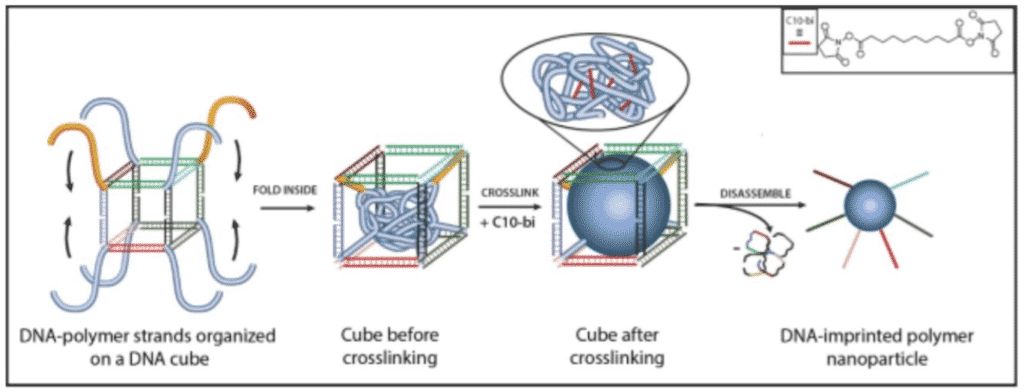Scientists Imprint Polymer with DNA Strands Developing New Materials
Polymers are very large molecules that are made up of thousands – even millions – of atoms that are bonded together in a repeating pattern. The structure of a polymer is easily visualized by imagining a chain. The chain has many links that are connected together. In the same way the atoms within the polymer are bonded to each other to form links in the polymer chain.
What makes polymers so fun is that how they act depends on what kinds of molecules they’re made up of and how they’re put together. The properties of anything made out of polymers really reflect what’s going on at the ultra-tiny (molecular) level. So, things that are made of polymers look, feel, and act depending on how their atoms and molecules are connected, as well as which ones we use to begin with! Some are rubbery, like a bouncy ball, some are sticky and gooey, and some are hard and tough, like a skateboard.
But then, although polymers are used in everything from food packaging to clothing to 3D printing and electronics, most self-assembled polymer structures have been restricted to symmetrical forms such as cylindrical or spherical
shapes.But in recent times, there have been attempts made at developing non-symmetrical polymer structures – for instance ‘Janus’ particles with two varied ‘faces’ – and they are beginning to discover exciting new applications for these materials. One example refers to robotics developed with flexible, soft structures that can change shape in response to external stimuli.
In this direction, McGill University researchers have now chemically imprinted polymer particles with DNA strands – a technique that could lead to new materials for applications ranging from biomedicine to the promising field of “soft robotics.”
McGill Chemistry professor Hanadi Sleiman, senior author of the study says, “Chemically copying the information contained in DNA nanostructures offers a powerful solution to the problem of size, shape and directional control for polymeric materials.”
To aid in the study, Sleiman and her PhD student Tuan Trinh teamed up with colleagues at the University of Vermont and Texas A&M University at Qatar.
Together, they developed a method to imprint the polymer ball with DNA strands arranged in pre-designed orientations. The cages can then be undone, leaving behind DNA-imprinted polymer particles capable of self-assembling – much like DNA, itself – in pre-designed patterns.
And since the DNA cages are used as a ‘mold’ to build the polymer particle, the particle size and number of molecular units in the polymer can be precisely controlled, says Sleiman.
This asymmetrical polymer structures could be used eventually in a range of applications, the researchers believe. One potential example would be the multi-compartment polymer particles, with each compartment encapsulating a different drug that could be delivered using different stimuli at different times; another being porous membranes that are asymmetric, so they direct molecules along specific paths to separate then.



































